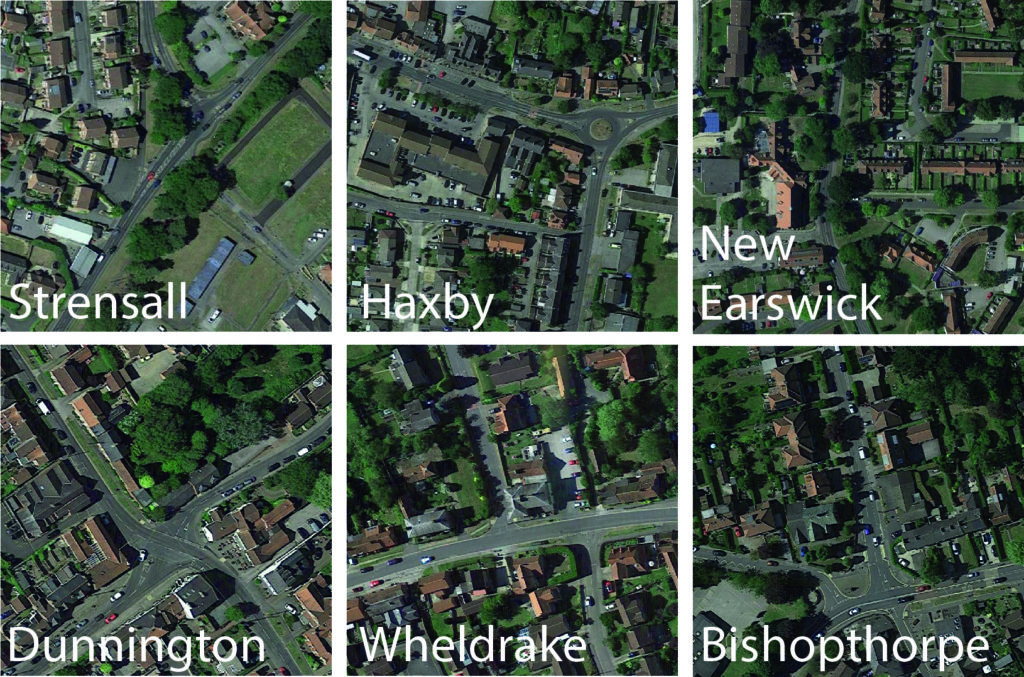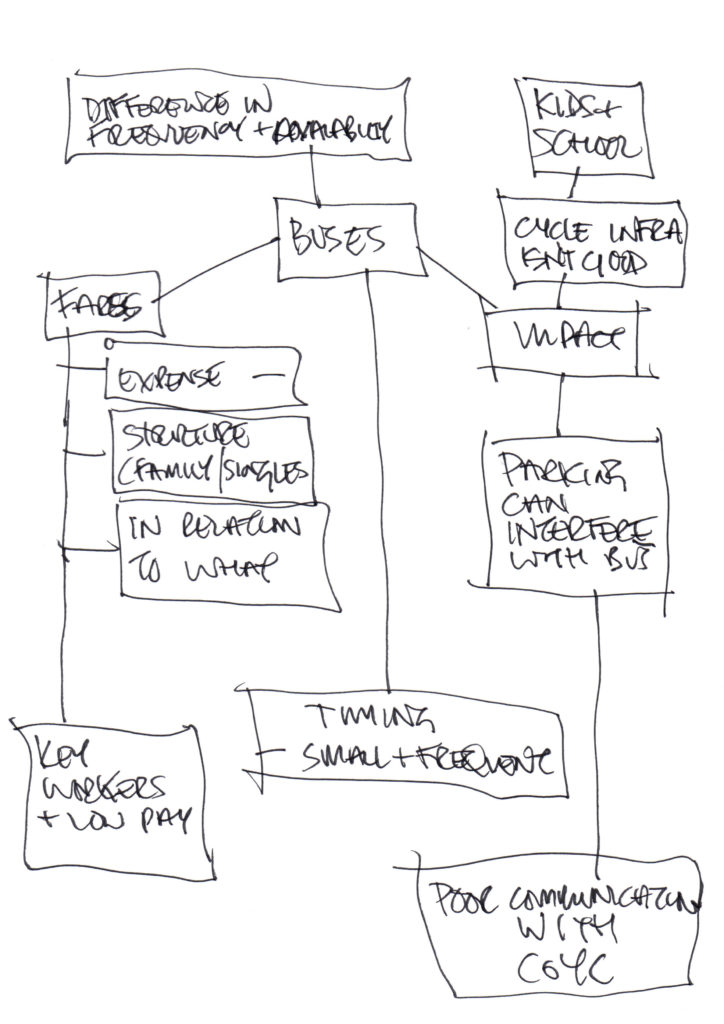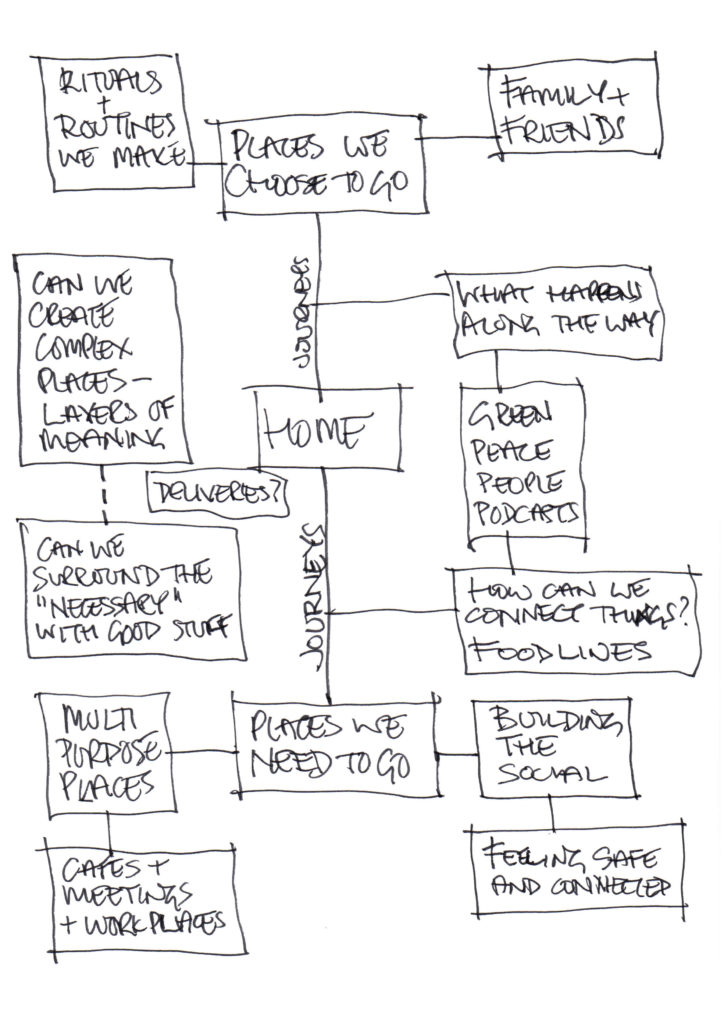
Five walks and an online workshop as part of York Design Week 2020 – Phil Bixby & Helen Graham
It is often said that York’s city centre and suburbs face different issues to York’s villages – and that those that live in town rarely understand what matters to people living out of town. Yet the biggest issues we face – whether housing and movement – can only be addressed by building mutual understanding between people who live in rural and urban York. We asked: How do the biggest issues York faces look from the perspective of York’s villages? How can we use these conversations to think about designing deliberative systems that facilitate and link deep and informed conversations across York?
To experiment as part of York Design Week, we ran small socially-distanced walks and conversations in York’s villages and then invited everyone involved – together with interested urban dwellers – to meet online to draw out the issues and reflect on how to design deliberative systems that can link us together. Over the weekend of 24th/25th October we did walks in Strensall, Haxby, New Earswick, Dunnington and Bishopthorpe (a sixth in Wheldrake was cancelled due to lack of support) and the following Saturday we ran a Zoom workshop.
So, the walks and what came out of them:-
Housing was a major concern – the shortage of affordable housing and the impact on infrastructure that new housing would have. The impact of commuting was clear – in the absence of local employment, people drive to work door to door and there is little interaction and little opportunity for social cohesion to be built. This is compounded by large areas of similar housing creating large blocks of similar demographic – swathes of bungalows occupied by older people.
The social and cultural impacts of this were discussed; the role of libraries (where they exist) in creating collective activity, and churches too – although it was noted that this doesn’t suit everyone. Places often have large numbers of single-activity groups and clubs; often they are competing for funding but sometimes can come together successfully to collaborate. Bored young people can be seen as a nuisance – where they are local personal connections can defuse this to some extent, but the lack of opportunity remains. Parish councils have a difficult role – sometimes working strategically to create Neighbourhood Plans, but often mired in complaints, development control comments and struggling to get support from the city council. The big connectors? Schools and dog-walking.
We touched on the Green Belt and other surrounding countryside, which was seen as important in preserving each village’s identity by preventing it merging with others, or preventing wholesale change in character by large-scale development. In many of the villages though opportunity to use the countryside as an amenity are few – public rights of way out from the villages are rare. Cycling out is possible, but…
…the roads outside and between villages are often perilous on a bike, due to high traffic speeds and or volume. In general, transport and movement is a key area of concern. Traffic has an impact on all of the village centres – pedestrian safety is a concern and parking is problematic – because of lack of it or the related problem of dangerous and/or selfish parking, including pavement parking. There is also the issue of “unofficial Park & Ride” – people driving to use better bus routes – which we returned to during the online workshop. Buses were a common topic, with people noting that they often weren’t quick or convenient or affordable – taking circuitous routes or with pricing that made driving and parking much cheaper. While village to city routes were relatively plentiful, village to village routes were very rare.
Lastly economy and development was discussed. In almost all cases the villages had lost shops and other facilities, and had ageing populations which related to diminishing employment and rising costs of housing. Issues of housing and employment and transport are all related, and can span across wide geographic areas – big developments in Stamford Bridge / Pocklington have had an impact on traffic in and around Dunnington, for example.
Having thawed out from the walks (which took most of a week) we fired up Zoom and engaged with a mixture of city dwellers and participants in the walks, to look at how common issues to both might be addressed. The aim of the session was to:-
- Share themes from the walks
- Dive into one specific issue that kept coming up in different ways in all five of the conversations and think systemically about it
- Think about how it can be unstuck and positive change enabled.
The issue that we chose to dive into was “unofficial Park & Ride” (or “Park & Go” as the urban equivalent was often people parking as close as possible to the city centre and then completing their commute on foot). This was one of a range of issues under the broad heading of “people’s home lives being screwed up by other people’s movement”. We asked people to discuss this as a group, articulating it and looking for common factors across the village to city context. What we got was:-

…which largely flagged up failings in bus provision; for example that routes and frequency were poor meaning it was worth driving to park and pick up better routes, or that fare structures mean commuters find it more affordable to drive, park and walk. The former is mainly a village issue, the latter a city issue – and the two are just different facets of a common pattern of behaviour.
This led to our final discussion around deliberative systems; how might we how we might connect issues, ideas and people in ways which:-
- Connect across everyday talk, community-led action with empowered decision-making spaces (such as government and local government). This is about going where people are – pubs, places of worship, skateboard parks – meeting on their own terms and linking up people and perspectives not usually heard within public sphere conversations.
- Make it deliberative not assertion-based – instead of “have your say” (a cliché of public engagement) which leads to untested assertion, we need to create different routes into an informed and creative conversation, one that can – through multiple perspectives – can make visible and deal with complexity and systemic effects
- Be responsive to action and change at all scales in making places – change is about the council but also about all of us and businesses and organisations of various shapes and sizes.
Due to time constraints we only really touched upon this. We identified that many of the behaviours identified were simply people solving their own problems (the “best” route to a destination/activity) in a way which then has unintended consequences for others. The question from this was how might we use the same problem-solving approach but collectively? Is there an opportunity for this to be an approach to Neighbourhood Planning, or to shaping the Local Plan or Local Transport Plan?
One idea that came from the discussion was to focus creatively on positive issues – rather than the negativity that is associated with movement. The example given was food and this was seen as a way of potentially sustaining a conversation between villages. (And this links to the idea of “Food Lines” which came out of an earlier workshop we ran looking at building mixed communities – routes we take and why we take them):-

With the Planning White Paper very much on our minds, could better public engagement in the shaping of Local Plans address these more complex issues? Instead of simply focusing on where housing or employment goes, can good public engagement unlock thinking about radical solutions which really address their concerns about what is important in their neighbourhoods? Would a real, long-term background conversation about what we want our city to be like, allow the villages and the city to come together to propose positive change?